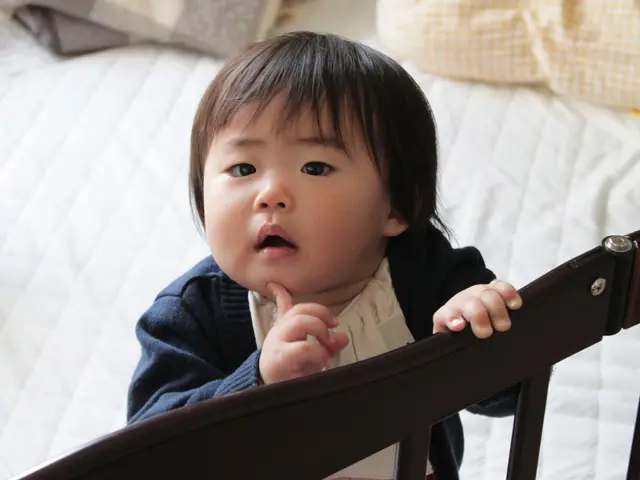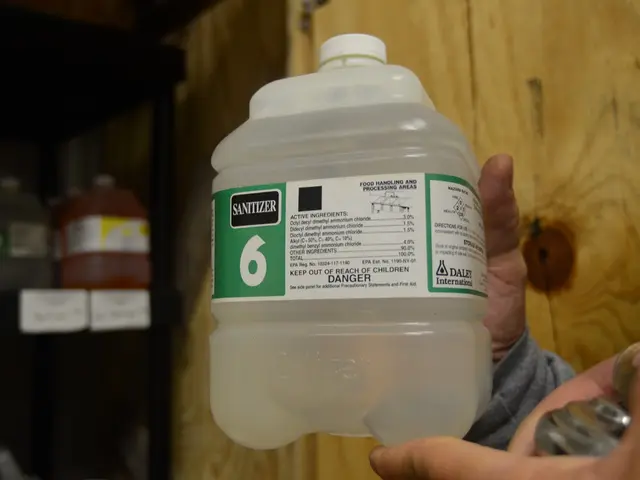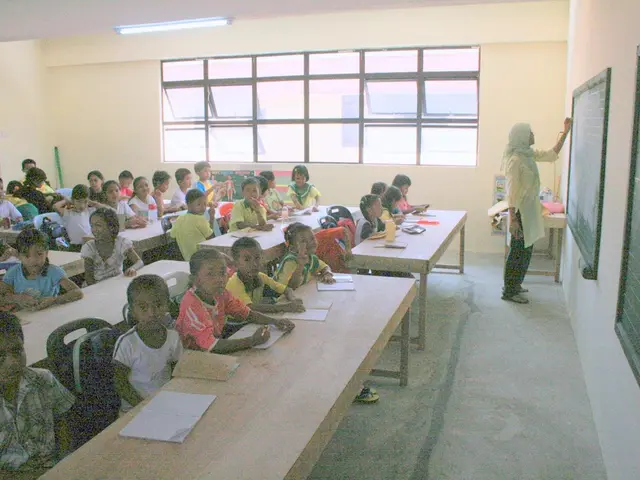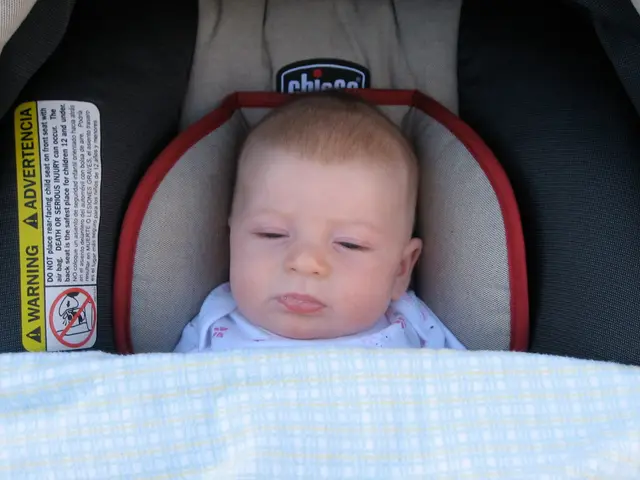Seamlessly Navigating Changes: School, Travel, or Any Transition You Encounter
Navigating life's changes with your kid can be a tangled mess, but it doesn't have to be a nightmare. Whether it's heading back to school, a family trip, or a new routine, it's all about keeping a cool head and using the right tools.
Many kids struggle with transitions, leading to tantrums and whining. But it's especially tough for those with ADHD, anxiety, or autism. To turn those tough days into smooth sailing, here are some strategies to help your youngster cope:
Keep it calm and consistent
Routines and consistency are your best pals when it comes to managing transitions. Having predictable structures helps kids feel secure and eliminates bad behavior by setting clear rules. Consistent routines make kids feel powerful and secure as they know what to expect.
Young kids' mental health benefits from routines. Bedtime and dinner routines, for instance, make kids feel safe and happy. Routines also teach kids how to control themselves, an essential skill for life. When schools reopen, it's crucial to review and reinforce routines, so kids adjust easily.
Give them a heads-up
Warning kids about an upcoming change helps them prepare for it, lowering anxiety and preventing bad behavior. Previewing what's next makes transitions smoother. Try saying something like "In 20 minutes, it's time to finish breakfast and go to school." Then, give a 10-minute and 5-minute countdown to keep your kid ready. Sometimes, a simple trick like this can reduce tantrums by up to 70%.
The power of music
Music can transform any space, including classrooms. It can rev up or calm kids down, making transitions an easier journey. Use familiar tunes to signal it's time to change activities. Let your kid choose their songs to make them feel more in control.
Visual cues
Visual cues like schedules, timers, and symbols are easy for kids to understand, especially those who might struggle with language or developmental issues. These visuals guide kids through a transition, reducing tantrums and resistance. Visual cues also help with memory and thinking skills. Make sure the visuals match your child's level, like pictures or real objects, to make them even more useful.
Keep their focus
Talking directly to your kid during transitions is essential, especially for those with ADHD. Making eye contact, sitting beside them, or asking them to repeat what you said helps you connect. Loud, abrupt calls from across the room only cause frustration and don't work.
Positive reinforcement
Creating effective reward systems can encourage good behavior during transitions. Use stickers, tokens, or praise to reward good behavior. This boosts kids' self-esteem, communication, and teamwork skills while reinforcing their good behavior.
Time for a change
As summer ends, families must adjust to school routines. One big change is getting kids back to regular sleep times. Kids aged 6 to 13 need 9 to 11 hours of sleep each night for better coping with stress. Start setting sleep routines a few weeks early. Limit screen time before bed, stick to a bedtime routine, ensure kids get enough exercise, and avoid too much caffeine.
Reviewing rules and expectations with your kids is also key. Keep the conversation open and emphasize the importance of doing homework first, having friends over, and following after-school rules. Open communication helps during the transition and throughout the school year.
Embrace the change
Adjusting to changes, whether due to the pandemic or school changes, requires empathy, adaptability, and self-care. Stay calm and use virtual meetings with your kid's teacher to address any concerns. Encourage your child to wear a mask for extended periods before school starts to ease anxiety. Take care of yourself during this stressful time by focusing on your well-being, meditating, or practicing deep breathing.
Remember, every child is different, and what works for one might not work for another. Listen to your kid, communicate openly, and adapt strategies as needed. With patience and creativity, your child will handle changes like a pro!
[1] https://www.ncbi.nlm.nih.gov/pmc/articles/PMC4951207/[2] https://www.ncbi.nlm.nih.gov/pmc/articles/PMC6351207/[3] https://www.ncbi.nlm.nih.gov/pmc/articles/PMC6010823/[4] https://www.ncbi.nlm.nih.gov/pmc/articles/PMC5194058/[5] https://www.ncbi.nlm.nih.gov/pmc/articles/PMC3607388/
- Incorporating consistency in daily routines can help children with ADHD, anxiety, or autism cope better with transitions, as it provides them with a sense of security and eliminates bad behavior.
- To manage transitions effectively, it's crucial to establish boundaries, such as clear rules and routines, to teach children self-control, an essential skill for life.
- To foster a respectful and supportive environment for child development, parents might consider integrating educational resources like science, health-and-wellness, parenting, lifestyle, and education-and-self-development into their daily lives.
- When working on social skills development, it can be beneficial to use visual cues, like schedules, timers, and symbols, to help children grasp transitions more easily, especially for those struggling with language or developmental issues.
- In light of the ongoing pandemic and school changes, it's essential for parents to prioritize their own emotional well-being through practices such as meditation and deep breathing, ensuring they can provide the empathy, adaptability, and self-care required during challenging times.








